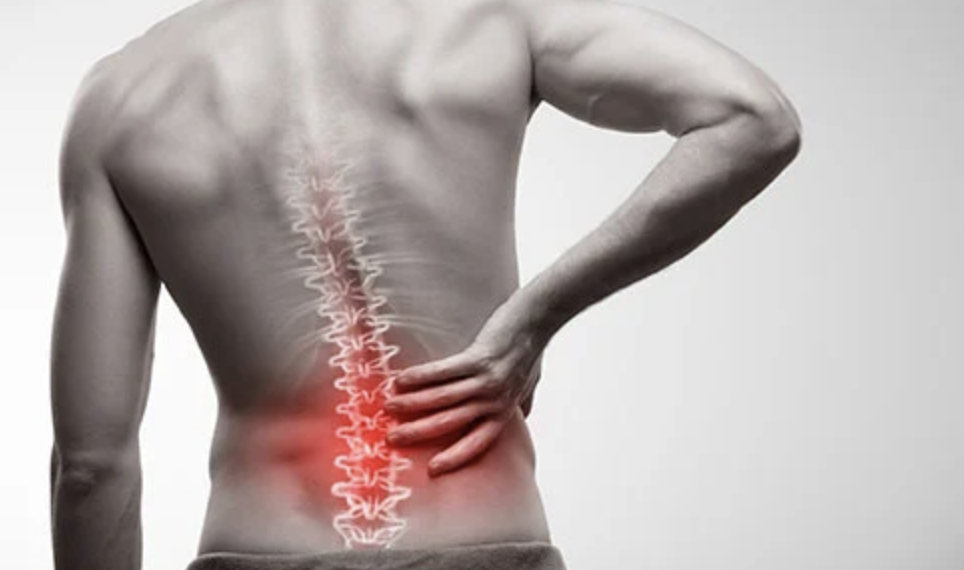
How to Stop your Chair being a Pain in the Back
07 Mar 2019
A couple of months ago my husband came home with a nice big chair from his office. The company he works for were relocating to a new office and everyone was getting a new chair. The employees were told they could keep their old chairs for their home office – if they wanted to.

A couple of months ago my husband came home with a nice big chair from his office. The company he works for were relocating to a new office and everyone was getting a new chair. The employees were told they could keep their old chairs for their home office – if they wanted to.
The chair was nice, with a large cushioned seat and back, with height adjustment, lumbar support, arm-rests – and initially I enjoyed sitting in it. However, little by little, I started noticing increasing pain in my shoulders and neck. Over time it became apparent that my husband’s ‘nice old’ chair was causing the discomfort.
Despite the fact that the ‘nice old’ chair had all sorts of ergonomic features to shape itself to my body, these features hadn’t been re-set and aligned to how I was sitting in the chair and very quickly I was causing stresses and strains to parts of my body that I shouldn’t have been.
An ergonomic chair that is ‘in tune’ with your body will eliminate the stresses and strains on your body, it will enable you to focus for longer periods of time, consequently your productivity will improve and the released tension and stress will help make for a healthier you.
Key features of a 3 lever ergonomic chair
- Generous seat and back cushions – wider and longer seats are available depending on your body shape
- Chair backs are typically full length extending from the shoulders to the seat – to promote sitting upright
- The lumbar support in the lower part of the back of the chair should match the natural curve in your spine. Some ergonomic chairs have adjustable lumbar support so the position of the support can be adjusted
- Adjustable armrests to support your elbows takes pressure off your shoulders and neck
- Seat height adjustability so that your feet can be flat on the floor and your hips and knees are flexed at 90 degrees
- Ability to change the angle of the seat. This ensures that the seat angle is set perfectly ‘in tune’ with your body and can also assist in easing the pressure on hips and thighs
- Seat slide can also be useful to change the depth/length of the seat. When used in conjunction with the seat height this enables the seat to be set correctly for shorter or taller users
3 lever chairs provide most of these features (except the seat slide which is included on some but is an optional extra on others)
Chair Set-up Guide for 3 Lever Chairs
The first step in setting up your 3 lever ergonomic chair is determined by the normal height of your desktop. All chair settings should ‘stem’ from that.
Step 1 – Set the seat pan flat |
Push down or pull up the seat angle lever – this will free the seat so you can pull up or push down the front edge of the seat with your hand. When you have the seat flat or at the angle that suits your posture, place the lever back in the lock position |
Step 2 – Adjust the seat height |
Your seat height is right when: 1. Your hips are above the height of your knees 2. Your heels are firm on the floor 3. The seat is not creating uncomfortable pressure under your thigh 4. Your forearms are resting comfortably on the desktop (For height adjustable desks it is recommended that your seat height be adjusted each time your desktop height is adjusted) |
Step 3 – Adjust the back rest height |
Loosen the lever/dial at the rear of the backrest. Lift or lower the backrest to obtain the correct position. The backrest should be adjusted so that its lumbar curve fits into the curve of the lower back. Some chairs have a ratchet type mechanism for setting the backrest height Pull the backrest to the very highest setting then drop it to the very lowest setting. From the lowest setting, slowly lift the backrest to the correct position.
|
Step 4 – Adjust the back rest angle |
Push down or pull up the lever – this will free the back rest so you can push it back or let it come forward using your body weight. When you have the back rest at the angle you find comfortable (and this is a personal comfort level), place the lever back in the lock position
For chairs with adjustable armrests (height and width), to set your armrests drop your arms to your side, bend them at the elbow so your forearms rest comfortably on the desktop – and lock the adjustable armrests in place Office Products Online has a wide selection of ergonomic 2 and 3 lever chairs with all of the accessories to suit all shapes and sizes. We specialise in making sure your work place seating is comfortable, safe and flexible for you. For an obligation free review of your requirements phone us now on 0-800-535-029 or email shop@officeproductsonline.co.nz |
 return to all
return to all
More handy tips

Is Your Storage System Efficient?
02 Nov 2021
Static shelving is one of the most common storage systems available for paper based records and is normally designed to maximise wall and floor space.
Read More
Ergonomics at Work at Home
21 Apr 2020
Remote working has been a growing trend (before COVID-19), as more and more people are opting to work from home.
Read More
Why An Ergonomic Desk Chair Is Important At Work
11 Sep 2018
Some people associate a soft seat with an ergonomic desk chair and for others the opposite is the case - so chosing an office chair that suits everybody can be a potential 'minefield'.
Read More